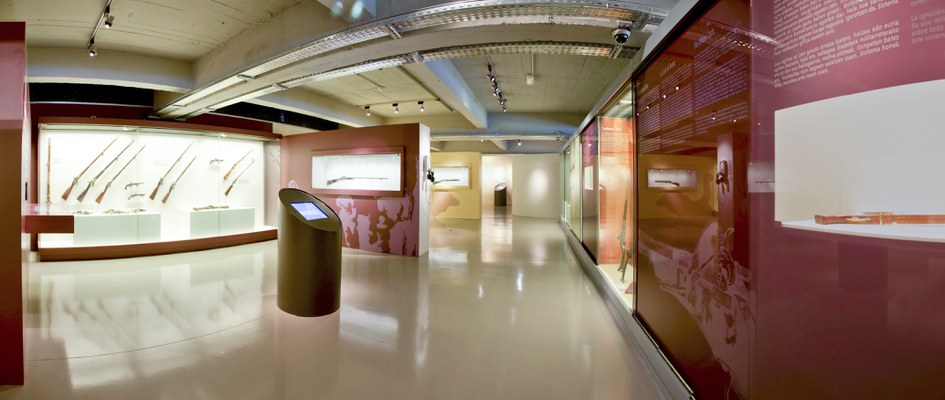Flintlock Weaponry and percussion arms (XIX)

Private enterprise in the Craftsmen System
In this room, centred on flintlock arms and percussion arms, we can admire small arms and larger items of this period. Of particular interest is the flintlock pistol made in Oviedo by the Eibar manufacturer Doiztua, proof of the exodus of gun-makers to the region os Asturias due to events following the French occupation of the area at the end of the 18th century. We can also see pieces made by gun-makers such as Ramón Zuloaga, José Aguirre, Ignacio Bustindui, Astiazaran, Gárate, among others. These arms are on display together with material relating to the first three decades of the 19th century.
The 19th century was one of great changes, new technology, the first steps towards industrial production and the decline of the trades system, none of which could be ignored by the arms industry.
The flintlocks were to remain in use as portable arms until the third decade of the century, when percussion arms took over due to the invention in England of the cartridge cap.
The advantages of percussion arms not only ended production of flintlock weapons, but brought about the conversion of the now dated arms to the new system, in which craftsmen transformed old guns, veritable works of art by renowned gun-makers. The demise of the flintlock and the arrival of percussion arms constituted a huge leap in the technological race of weapon design, and new inventions were to follow, like the rifled bore.
This room contains two large display cabinets. One is exclusively for arms produced locally, of which we can highlight a hunting knife with percussion system pistol made by Galbasoro, or a pair of pistols produced by Eusebio Zuloaga, gun-maker to His Majesty The King.
There will also be audio-visual displays on the construction, workings and various ignition systems of muzzle-loading weapons.

